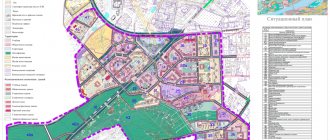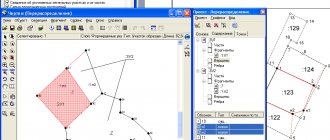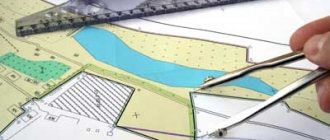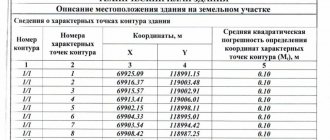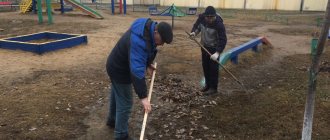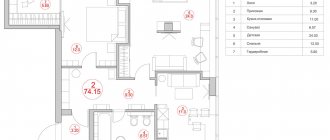News
Extracts by zones and boundaries
- now in the KPT Archive - at the beginning of the list of quarters.
What does CBT contain?
Now not only the number of memory devices and OKSs, but also the entire list! And it’s immediately convenient to order an extract from Rosreestr.
Download a lot at once
: here you can enter the neighborhoods you are interested in - the service will find the latest files.
We print in seconds
KPT versions 08-11: 1 Gigabyte in 42 seconds, convenient table of contents, click on the cadastral number - go to the coordinates.
Rate the files:
from July 20, 2018. You can rate the file “excellent” or “bad” so that other users do not download false information.
5 points more!
From June 12, 2018, you can download up to 10 CBT files or statements per day, and for users of our programs and services, 25 files.
Restrictions in Law No. 120-FZ do not apply to this service
, since the service does not provide access to the information resources of Rosreestr, and participants in the KPT Archive transfer USRN information to the service free of charge.
Archive rules
- The CPT archive is built on the conditions of voluntary participation, taking into account the contributions of participants, non-refusal of participants in the issuance and reimbursement of their contributions.
- An archive participant can download as many cadastral XML files as he has downloaded such files. In this case, only downloaded files that were previously absent from the archive are counted.
- By uploading a file, the archive participant agrees that this file can be downloaded by any other archive participant free of charge. The file can be stored on the archive server free of charge and without a time limit; the file cannot be deleted.
- The participant can download his previously downloaded file without restrictions on the number of times, and can also use links from any web services that process this file.
- If a participant has previously downloaded a file, then in the future he can download this file without restrictions and use links from any web services.
- Since files are uploaded to the archive by participants, the creators of the archive do not bear any responsibility for the accuracy and completeness of the information and have no licensing obligations.
- In order to protect the archive, a limit has been set on the number of files downloaded by a participant per day (from 00:00 to 23:59) - 10 files
.
For users of the Polygon Pro series programs, as well as for those who purchased electronic signatures of a cadastral engineer or government authority in our Certification Center - 25 files
. - In order to protect the archive from intruders: ensuring the reliability of the archive files and preventing theft of files from the archive, the points received become valid after 24 hours
. This time is necessary to manually check the uploaded files and identify falsifications. The accounts of attackers are blocked. We are for justice and a clean archive, thank you for your understanding. - In order to maintain up-to-date information in the archive, points are awarded for files that correspond to the three latest versions of XML schemas, for example, for KPT these are versions 11 (01 USRN), 10, 09.
- The above rules apply similarly to the uploading and downloading of both KPT XML files and other files: Unified State Register of Entry (USR) extracts, ZU and OKS passports, Unified State Register of Entry (USR) information. Points are accrued and spent separately, that is, two accounts are maintained: for CPT and for other files.
- Points can be purchased for a fee, in which case they are valid immediately
. Within 24 hours, you can download all purchased files without a limit on the number of downloads per day; after the day expires, the restriction will apply again.
The service is free. The number of uploaded files is unlimited.
The service is free, but you can thank us:
- Share the link on social networks
- Write on the forums about this service
- Tell your colleagues about the existence of this service
- Write a review on our website.
You are not logged in. Please log in to print files. Login (log in) /// Registration
Instructions:
To work with the archive:
register on our website, and if you are already registered, then log in (log in), that is, enter your username and password. Registration on our website is registration in the archive. Registration is required so that points are awarded to you, and unregistered users cannot download files at all.
Uploading files:
Click the
Select file
(or
Browse
) button.
Select XML files
or
ZIP archives
containing one or more XML files (archives in archives of any nesting are allowed).
You can upload up to 1000 files at a time. In the file selection window, to select several files at once, click on the first file, then, while holding down the Shift
, click on the last file in the list.
Click on the Submit
.
After this, the page will be updated and the names of the downloaded files, their type, as well as the number of points
equal to the number of downloaded files that were previously missing from the archive will be displayed. Subsequently, this is the number of files you can download from the archive.
Note:
To improve the quality of the archive, we ask you, along with the XML files, to also upload electronic signature files (SIG files) issued by the Rosreestr authorities (cadastral chamber). The signature and the XML file are usually packaged in one ZIP archive, and if you download the archive, then there is no problem, but if the archive was unpacked by you, and you download the XML file and the signature file SIG file separately, then please do this in one download, that is, select both files in the folder at once, and then click the Send button. If you uploaded one file by mistake, repeat the upload with two files at once.
Downloading files:
In
the list of regions
, select your region and click on it with the mouse.
A list of districts
will open , where you also select your district and click.
A list of cadastral quarters
, select the desired quarter. If a quarter is presented as a link and marked with a green checkmark, then our archive contains an XML file of the cadastral plan of the territory for this quarter. A blue tick indicates the presence of statements in the quarter. Click on the designation of the quarter, a list of XML files will open: there may be several files that differ in the date of issue of the KPT by Rosreestr. Click on the file - statistics on the contents of the file will open: how many compulsory medical insurance points, buildings, etc. (for versions 08-11), then when you click on the quantity, a list of objects opens: cadastral numbers and addresses. By clicking on the link, you can order an extract about the main characteristics of the objects.
Below will be a list of cadastral numbers of land plots and/or capital construction projects for which there are extract files in the archive. Click on the cadastral number with the mouse - a list of cadastral files will open indicating the file type (extract, passport, etc.), date, size.
Extracts by zones and boundaries are at the beginning of the list of neighborhoods. They are grouped by type: Borders between subjects of the Russian Federation, Borders of territorial zones, etc. Click on the type of border or zone - a list of objects will open (new designations for the new USRN extracts are used), then a list of statements will open for the selected border or zone.
Another way to download:
in the search form for a quarter (object), indicate the cadastral number of the quarter, or land plot, capital construction object, click the
Find
- a list of files will be displayed, or a message about the absence of files for this quarter or object in the archive.
Download by list of quarters:
go to the auxiliary page, specify the list of quarters you are interested in (you can copy the list of quarters in the KPT Archive) - the system will find the latest files for each quarter, and then download the files.
Working with a list of files:
- Download
button to download the KPT XML file or another cadastral file (a ZIP archive containing the XML file and the SIG file of the signature, if available, is downloaded);
button to print a cadastral plan of the territory or a cadastral extract, passport in the web service;
quick print
button , i.e.
the printout is already available in finished form, you won’t have to wait long; Drawing
button for viewing graphics and working with the file in the GeoEditor web service;
button Convert to MIF/MID (MapInfo)
to obtain MIF/MID format files in the web service;
button Convert to DXF (AutoCAD)
to obtain DXF files in the web service;
button Convert to Shape (ArcGis)
to receive SHP format files in the web service;
button Convert to KML (Google)
to receive KML format files in the web service;
information that you have previously downloaded this file and can download it without restrictions (points will not be debited); information that this is your file (you uploaded it to the archive), so you can download it without restrictions (points will not be debited); information that this file is signed with an electronic signature
, so such a file can be trusted, but only after checking the signature.
You can check the signature, for example, using the Polygon Pro series programs, which, in addition, sign and send electronic documents directly to Rosreestr for free; Excellent file
button - mark the file if you are sure that the information in it is reliable;
the number after the file is the number of users who tagged it; Bad file
button - mark the file if you think that the information in the file is unreliable, the file was changed by an attacker before being uploaded to the KPT Archive (there is no need to mark genuine but outdated files, since we store a history of changes).
Note:
downloading is considered to be a mouse click not only on the
Download
, but also on the buttons for transferring the file to any web services:
Print
,
Drawing
.
Points are deducted.
will not be deducted
when downloading it or viewing the drawing .
List of uploaded/downloaded files:
Click on the large numbers showing the number of files you have uploaded or downloaded - a table with a list of files will open. Only files for which points have been awarded or debited are displayed. To close the table, click on the cross in the upper right corner of the table.
Updating information in the archive:
every half hour. In half an hour this happens:
- adding newly downloaded files to the archive;
- adding tags My file
,
The file was downloaded
; - counting the number of downloaded files in the archive as a whole, by region, district.
What XML documents can be printed?
- Cadastral plan of the territory (versions 05, 07, 08, 09, 10, 11 - EGRN 01)
- USRN: extracts from legal documents and OKS: short and complete (versions 07, 01 USRN)
- Cadastral extract of a land plot (versions 03, 04, 05, 06, 07)
- Cadastral passport of a land plot (versions 02, 03, 04, 05, 06)
- Certificate of cadastral value (versions 02, 03)
- Cadastral passport of a capital construction project (versions 01, 02, 03, 04)
- Cadastral extract about the capital construction project (versions 01, 02, 03)
- Notification of absence of information in the State Property Committee (versions 02, 03)
- Decision on registration, refusal, correction, cancellation, etc. (version 01, 02)
- Certificate of termination of existence of an accounting object (version 01)
- Unified State Register: Extracts on rights, copyright holders, lack of information, etc. (versions 01-07)
- Land plan (versions 04, 05, 06, 08)
- Technical plan (versions 02, 03, 06)
- Inspection report (versions 01, 02)
- Location diagram of the charger on the KPT (versions 01, 02)
What it is?
A cadastral passport is a document in paper or digital form on which the exact boundaries of a land plot are marked with an acceptable error of no more than 5-10 cm.
Such a plan is drawn up not only for land plots. Other types of real estate, for example, buildings, structures, are also subject to appropriate accounting, but they are connected to the land and are taken into account in the plan in direct connection with the site. In fact, this is the basic document for cadastral registration of real estate.
This is what a cadastral plan of a land plot looks like:
PsyAndNeuro.ru
Anxiety disorders occur in 15%–20% of children and adolescents during their lifetime. Generalized anxiety disorder, social phobia, and specific phobias present with symptoms similar to those found in depression, contribute to decreased academic performance, changes in family relationships, and disruption of daily activities.
Cognitive behavioral therapy (CBT) is most commonly used to treat anxiety disorders in children and adolescents. Recently published meta-analyses have demonstrated the effectiveness of this psychotherapy method in reducing anxiety symptoms in children with and without autism spectrum disorder. Across studies, up to 66% of cases improved, compared with 21% for those who did not receive psychotherapy. However, in addition to CBT, psychologists and psychotherapists often use other techniques, for example, behavioral therapy (BT) without cognitive restructuring, bibliotherapy. Debates regarding the various components and formats of CBT are still ongoing. For example, it is unclear at what age it is best to start it, and whether individual sessions are more effective than group ones. All this leads to a decrease in the frequency of use of CBT. The paired studies that have been conducted are ineffective in answering these questions, since they directly compared different types of psychotherapy. In turn, in network meta-analyses it is possible to use indirect comparison.
Such a study was published in January 2021 by Xinyu Zhou and co-authors in the journal JAMA Psychiatry. Its purpose was to comprehensively compare different psychotherapeutic techniques used to treat anxiety disorders in children and adolescents. To do this, the authors comprehensively studied such databases as PubMed, Cochrane Central Register of Controlled Trials, EMBASE, PsycINFO, Web of Science, CINAHL (Cumulative Index to Nursing and Allied Health Literature), ProQuest Dissertations, LILACS (Literatura Latino Americana em Ciências da Saúde), US Food and Drug Administration, from which studies published from the very beginning of the database until November 30, 2021 were taken. The most relevant papers described different types of structured psychotherapy for the acute treatment of children and adolescents (under 18 years of age) with an established diagnosis of an anxiety disorder. Psychotherapy was considered structured if it involved instructions for the therapist and/or patient.
According to the DSM-V, anxiety disorders include generalized anxiety disorder, social anxiety disorder, specific phobias, panic disorder, agoraphobia, separation anxiety disorder, and selective mutism. Unlike ICD-10, post-traumatic stress disorder and obsessive-compulsive disorder are not included. The authors excluded from their meta-analysis studies of combination therapy, treatment of treatment-resistant anxiety disorders, and studies lasting less than 6 weeks or with fewer than 10 respondents.
Webinar: Caring parenting within the framework of Cognitive Behavioral Therapy (October 3, 19:00 Moscow)
In the included studies, psychotherapy was provided in various variations: face-to-face or via Internet communication; working only with the child, or only with the parents, or family therapy; group, individual sessions or a combination of both. Since the effectiveness of treatment is different for any format and method of conducting psychotherapy, the authors previously separated them from each other. Parents were considered included in therapy if they participated in at least 40% of the sessions. The authors defined control conditions as no treatment, psychological placebo, no treatment change, or being on a waitlist. The psychological placebo was perceived by the researchers as no treatment, while the respondents believed that they were under the influence of active treatment, and although it was not structured, it could bring some positive effect.
After reviewing the articles included in the meta-analysis, the authors calculated the risk of bias based on Cochrane guidelines. The effectiveness of treatment was determined by comparing the state before it and the state at the control point or the state at the beginning and after 12 weeks of therapy. Anxiety symptoms were measured using psychometric scales such as the Revised Children's Manifest Anxiety Scale and Spence Children's Anxiety Scale. In addition, the authors relied on questionnaires filled out by respondents, reports from patients, parents, teachers, and doctors. Adherence to psychotherapy was studied by comparing the number of patients who interrupted treatment with quality of life and functional improvements, changes in condition compared to the beginning of therapy. If a study used multiple psychometric scales, the authors selected the one on which the respondent performed best.
As a result, 101 randomized studies with a total of 6625 respondents were included in the meta-analysis. They used different types of psychotherapy: group PT; combination of group and individual PT; individual PT with the inclusion of parents; group PT; group PT with parents; individual CBT; a combination of group and individual CBT; individual CBT including parents; CBT using Internet connection; CBT with parents only; bibliotherapy CBT. All of these psychotherapy formats were compared with control conditions (waiting list, psychological placebo, no treatment, no change in treatment). The main difference between CBT and PT was the absence of a stage of cognitive restructuring in the latter.
All included studies were conducted from 1994 to 2021 in 14 countries. 75 studies (74.3%) included respondents with mixed anxiety disorders. The average study size was 54 patients (range: 11 to 267). Almost half of the participants in all included studies were female (3350 or 50.6%). In 12 studies, respondents included only children, in 49, only adolescents, and in the rest, both. The average age of the participants was 10.8 years. The average duration of treatment is 12 weeks (from 6 to 32 weeks), the average number of sessions is 12 (from 6 to 32). The average number of sessions involving relatives was 4 (from 0 to 20). The average follow-up period for respondents was 6 months (range 1 to 12 months). 72 studies (71.3%) were classified as having a moderate risk of bias and 8 (7.9%) as having a low risk.
Having conducted a meta-analysis of studies, the authors found that in the post-treatment period and during the control period, group, individual CBT, as well as CBT with the involvement of parents, were significantly more effective compared to the control condition, namely among respondents from the “waiting list”. Bibliotherapy CBT demonstrated lower adherence than group CBT with parent participation and a waitlist control condition. Based on the criterion of improved quality of life and functional restoration, group CBT with the inclusion of parents, individual CBT, individual and group PT, Internet-based CBT, and parent CBT led to better results than those observed in the waitlist and psychological placebo control conditions.
In the post-treatment period, all types of psychotherapy turned out to be reliably effective. However, group CBT had a demonstrated benefit over control conditions and even over other forms of CBT and PT. At the end of the follow-up period, CBT and PT performed better than the wait-list and no-treatment control conditions. But group CBT was slightly more effective than group CBT involving parents. Psychological placebo was more effective than waitlist, both at post-treatment and during follow-up. Respondents demonstrated significantly lower adherence to bibliotherapy compared to other types of CBT and PT and control conditions. According to the criterion of improvement in quality of life and functional restoration, all types of CBT, but not PT, showed better results than psychological placebo and “waiting list”.
The overall heterogeneity in the effectiveness of psychotherapy in the post-treatment period was 0.65, at the time of therapy - 0.63, adherence - 0.49, and according to the criterion of improving the quality of life and restoration of functions - 0.51.
In the post-treatment period, group CBT (93.4%) and PT (86.1%) were effective; the control condition in the form of a “waiting list” (2.4%) was less effective. During the observation period, the best results were demonstrated by CBT of parents (67.9%) and individual PT with the involvement of parents (66.1%), CBT using an Internet connection (65.6%), the worst results were in the absence of treatment (1.5 %).
The new meta-analysis is the most recent and comprehensive review of the evidence on the topic to date. He demonstrated the effectiveness of CBT and PT compared with other types of psychotherapy. Group CBT appears to have a particular advantage over other methods of therapy. However, the clinical application of these findings is somewhat limited by the small number of studies for each form of therapy, weak methodology, and the risk of bias.
Early studies found a need for cognitive maturity in respondents to undertake CBT. For example, in a couple of studies, children aged 10–14 years were included in group PT. Therefore, it is from this age that one can expect the effectiveness of this type of therapy. However, whether age is associated with treatment outcome remains unclear, since factors such as depression and parent-child relationships may influence its effectiveness. The result of the meta-analysis demonstrated the advantage of the group therapy format over the individual one. Most likely this is due to the possibility of social stimulation and a large number of interactions. Future research should explore the specific use of group CBT for children and adolescents with anxiety disorders.
According to the results of this meta-analysis, it was CBT, but not PT, that contributed to improvements in the standard of living, for example, it contributed to the restoration of intellectual functions, improved socialization, reduced the level of mental discomfort and promoted daily activity.
The group format of CBT for parents demonstrated positive results compared to the control group. Therefore, Susan Bogels' webinar, "Caring Parenting through Cognitive Behavioral Therapy," for parents and professionals is very effective in addressing children's problems.
Summarizing the above, we can conclude that group CBT may be the method of choice in the treatment of anxiety disorders in children and adolescents. However, further studies are needed to confirm these results.
Author of the translation: Wirth K.O.
Source: Xinyu Zhou, Yuqing Zhang, Toshiaki A. Furukawa, Pim Cuijpers, Juncai Pu, John R. Weisz, Lining Yang, Sarah E. Hetrick, Cinzia Del Giovane, David Cohen, Anthony C. James, Shuai Yuan, Craig Whittington, Xiaofeng Jiang, Teng Teng, Andrea Cipriani, Peng Xie. Different Types and Acceptability of Psychotherapies for Acute Anxiety Disorders in Children and Adolescents A Network Meta-analysis. JAMA Psychiatry.
What is contained in the Cadastral Plan of the territory
The territory plan map contains information about:
- land plots, the USRN information about which does not comply with the requirements established on the basis of the Law for describing the location of the boundaries of land plots, including multi-circuit land plots, land plots, the state cadastral registration of which was carried out in the manner established by law before the date of entry into force of the Law and by which when carrying out such accounting, the name “single land use” was assigned
- land plots occupied by buildings or structures, squares, streets, driveways, embankments, squares, boulevards, water bodies, beaches and other public facilities, the formation of which is provided for by a territory surveying project approved in accordance with the procedure established by legislation on urban development
- buildings, structures, as well as objects of unfinished construction, the rights to which are registered in the manner prescribed by law.
Part 1 – General information about the site
The first part indicates the location, description and characteristics of the land itself:
- No. of land plot;
- Cadastral plan number;
- exact boundaries and total area;
- information about the owner;
- date and purpose of registration.
Based on the noted information, a unique number is assigned, which makes it possible to register ownership.
Part 2 - Site Plan
It contains a diagram and drawings of a plot of land indicating the size of the territory and area. In addition, all engineering objects that are located within its boundaries and their characteristics are displayed.
Part 3 – Text information about the features of the object’s location
This section is a description of the existing nuances regarding the location, the rationale for why the boundaries are drawn in the presented version. It describes exactly what factors influenced the marking of boundaries and features of the relief, since areas do not always have rectangular shapes. If there are adjacent territories, then they are certainly also noted where such parameters were taken from with a detailed description, photo and imprint, since if a cadastral plan is received, there may be challenges regarding the boundaries.
Part 4 - Description of site division
One of the main conditions for carrying out cadastral work is the division of the territory into zones. Such a necessity is necessary when allocating territory in a village for the purpose of designating non-commercial construction projects on it. Among them are the following functional areas:
- for the construction of a residential building;
- a designated area for a vegetable garden;
- for a recreation area;
- part for economic purposes;
- for placing a pond.
Zones are marked that are not subject to fencing, but are directly related to the designated land plot. In the city, this could be parking spaces, gardens, or an area that turns into a forest.
Part 5 – Layout of the immovable property
It presents another plan, but on a smaller scale. It marks the location of the land plot in relation to neighboring plots. Access roads, the location on the landscape and nearby areas are marked.
You can view such information yourself using the Internet, directly from the satellite, but the data shown is for informational purposes only and does not have legal force. From a satellite, you can find and view not only the area, but also the block of location, although the depicted frame cannot provide complete information. Basically, this difficulty may arise if land plots are owned by partnerships. An example is the Gardening Non-Profit Partnership (SNT).
Therefore, the plan is drawn up by cadastre specialists who have official permission to carry out the necessary measurements, calculations and drawings on the ground, using special equipment and tools.
Payment for obtaining a cadastral extract from Rosreestr
In the first letter from Rosreestr, the request number and access code to the link will be duplicated, and the payment code number and a link to proceed to payment, which is a link to check the status of the request, will also be displayed. After clicking on it and entering the request number and captcha, in the next form you need to click on the link “specify the payment code” and click the “Proceed to payment” button, at the bottom of this form a list of payment organizations working with Rosreestr will appear.
At the time of changing the article, payment can be made in several ways: 1) QIWI Bank - these are options such as QIWI Wallet, QIWI payment terminals, payment cards of this payment system; 2) Ural Bank for Reconstruction and Development; 3) Payment for government services; 4) Bank Platinum; 5) Bank "Tavrichesky" through payment by cards and from a mobile phone account.
After paying for the request, a letter will be sent to your mailbox stating that the application has been “Accepted for work”. After completing the application, Rosreestrom will receive a third letter, in which there will be a message that a document has been received during the processing of your application. To download it, follow the attached link and enter the access code provided in the letter.
Payment for an electronic statement application via QIWI wallet
When paying via QIWI wallet, follow the necessary instructions. Enter the wallet number, enter your phone number (the wallet number is linked to the phone number), full name, check the box that you agree with the terms of the offer and click on the “Next” button. An invoice will be issued in your Qiwi wallet. Go to the Qiwi website, enter your username and password. As a result, the “Pay” window of the QIWI wallet will display the invoice, which in our case is 300 rubles, the commission is 0 percent for the period of the QIWI “Payment for government services without commission” promotion.
Next, click the “Pay” button. Then you check the information in the summary information and select the “Confirm” button. An SMS message will be sent to your phone with a one-time code to confirm payment, by entering which you will again press the “Confirm” button and pay for the fulfillment of your request to receive an extract from Rosreestr. The next day, before 12:00, a message will be sent to your mailbox informing you that your application has been accepted for processing and indicating the planned completion date for processing your application.
Payment for an application for an electronic statement through State Services
When paying through State Services, follow the necessary instructions. Enter your full name, select the region, enter the address and click the “Proceed to payment” button. Check the box that you agree with the terms of the offer and click on the “Next” button. In the next step, you must confirm the payment details, which indicate the details of the organization and the payment amount of 300 or 335 rubles (if ordering a bank receipt). We accept the terms of the offer and click on the “Yes, that’s right” button.
In the next window, select the payment method. The minimum percentage for making payments via a bank card is 2.3%. In the next window, enter your card details and pay for the service, which with the proposed payment method will be 306 rubles 90 kopecks.


